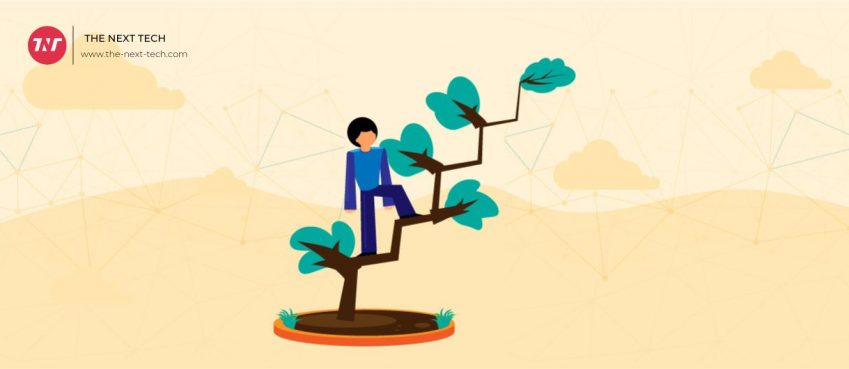
Robotics is a popular industry. All industries, including healthcare, travel, and communication, have been made more productive by technology. It has made learning easier and provided specialized education for students with disabilities. This is especially true when looking at the education sector.
The potential for robotics technology to have a profound impact on society, both economically and socially, is immense.
The way people live and work around the world has been greatly influenced by technology. To make learning more enjoyable and easier, the educational sector has adopted robot-teaching assistants in schools. Robotics can be used in education to help with the development of new methods and strategies.
Top 10 Applications of Robotics in Education
1. Supports skill development
Robotics enhances and supports students’ skills by boosting their knowledge through the design, construction, assembly, and operation of robots.
Students can interact with both mechanical and electrical processes, which can make learning more fun and enjoyable. It can make boring programming much easier.
2. Real-school experience
Educational robotics may be the solution for all students who are unable to attend school. The possibilities offered by technology’s tools, innovations, and discoveries continue to grow.
Robots can bring students into the classroom who might otherwise not be able to. Personal robots allow students to have a real school experience.
Also read: 50+ Cool Websites To Visit When Bored | Best Fun Websites To Visit In 2024
3. Special student opportunities
Robotics in the classroom is a great way for children and young students to learn. It allows them to access the information they need in a customized way.
Individual needs can be met by programming robots. The constant companion can be a great help for students with attention disorders and developmental problems.
4. Finding interest
Robotics prepares students for the future competitive workforce. Programming robots allows students to easily identify their interests, which will help them in their future job search.
This includes engineering, science, technology, and programming. A robot can be used to help students develop their engineering intuition. It also helps them focus on problem-based learning and how they can apply their knowledge.
5. Participation of the Community
Students can take part in many contests to win compliments and prizes. These events promote community involvement and allow students to make new friends. It can also motivate them to study hard, achieve higher scores, and be exposed at a global level.
Also read: The Five Best Free Cattle Record Keeping Apps & Software For Farmers/Ranchers/Cattle Owners
6. Teamwork
Robotics projects are often done in groups. This can help students improve their teamwork by taking responsibility for each member of the team, checking that work has been completed, assigning tasks, and convincing others to follow their lead. Robotics can be a great way to help everyone learn and find the best place in a group.
7. Promoting inclusion
Robotics can be a field that suits students with different skills and abilities. Robotics can help gender equality, as many people believe that only men are qualified to become engineers or programmers. It can encourage girls to be open and create great careers by encouraging new perspectives.
8. Creativity
Robotics is an innovative science that blends engineering and creativity. This allows students to learn, create physical models, and perform commands. This can increase students’ creativity and help them retain more information. Students will not be forced to learn.
Also read: Best 3DS Games In 2024 (#3 Is Best) | Best Nintendo Games To Right Now
9. Perseverance
Although programming robots can be a difficult task, children can learn perseverance by working through their frustrations. They also learn determination, which can be a crucial part of their future careers. Robotics is also a great way to help students develop their life skills.
10. Programming skills
Artificial intelligence is now a regular part of our daily lives. Artificial intelligence is essential in every area, including the home, school, office, and other public places. Robotics can be used to help students understand how robots work together to make the ecosystem more supportive.
Also read: [New] Top 10 Opus Clip Alternatives To Create Viral Short Clips
The Future Outlook
We can do many things in robotics with artificial intelligence and robotics as they continue to improve exponentially. Incorporating new technologies into the education sector can enhance interdisciplinarity and create learning environments that allow teachers to help students develop their creativity as well as cognitive abilities.
Robotics has the potential to bring positive benefits to education. Educational robotics encourages students to take an active role in their learning and develop their own knowledge through its active methods. Technology tools can be used in academic fields to create new learning opportunities.
Top 10 News
-
01
10 Exciting iPhone 16 Features You Can Try Right Now
Tuesday November 19, 2024
-
02
10 Best Anatomy Apps For Physiologist Beginners
Tuesday November 12, 2024
-
03
Top 10 Websites And Apps Like Thumbtack
Tuesday November 5, 2024
-
04
Top 10 Sites Like Omegle That Offer Random Video Chat
Monday October 21, 2024
-
05
Entrepreneurial Ideas To Make 5K In A Month (10 Realistic Wa...
Monday October 7, 2024
-
06
[10 Best] Cash Advance Apps Like Moneylion And Dave (No Cred...
Friday September 20, 2024
-
07
Top 10 Richest Person In The World
Tuesday August 27, 2024
-
08
Top 10 Unicorn Startups In The World (2024-25)
Monday August 26, 2024
-
09
Top 10 IT Companies In The World By Market Cap
Thursday August 22, 2024
-
10
[10 New] Best OnionPlay Alternatives To Stream TV Shows And ...
Tuesday June 11, 2024







